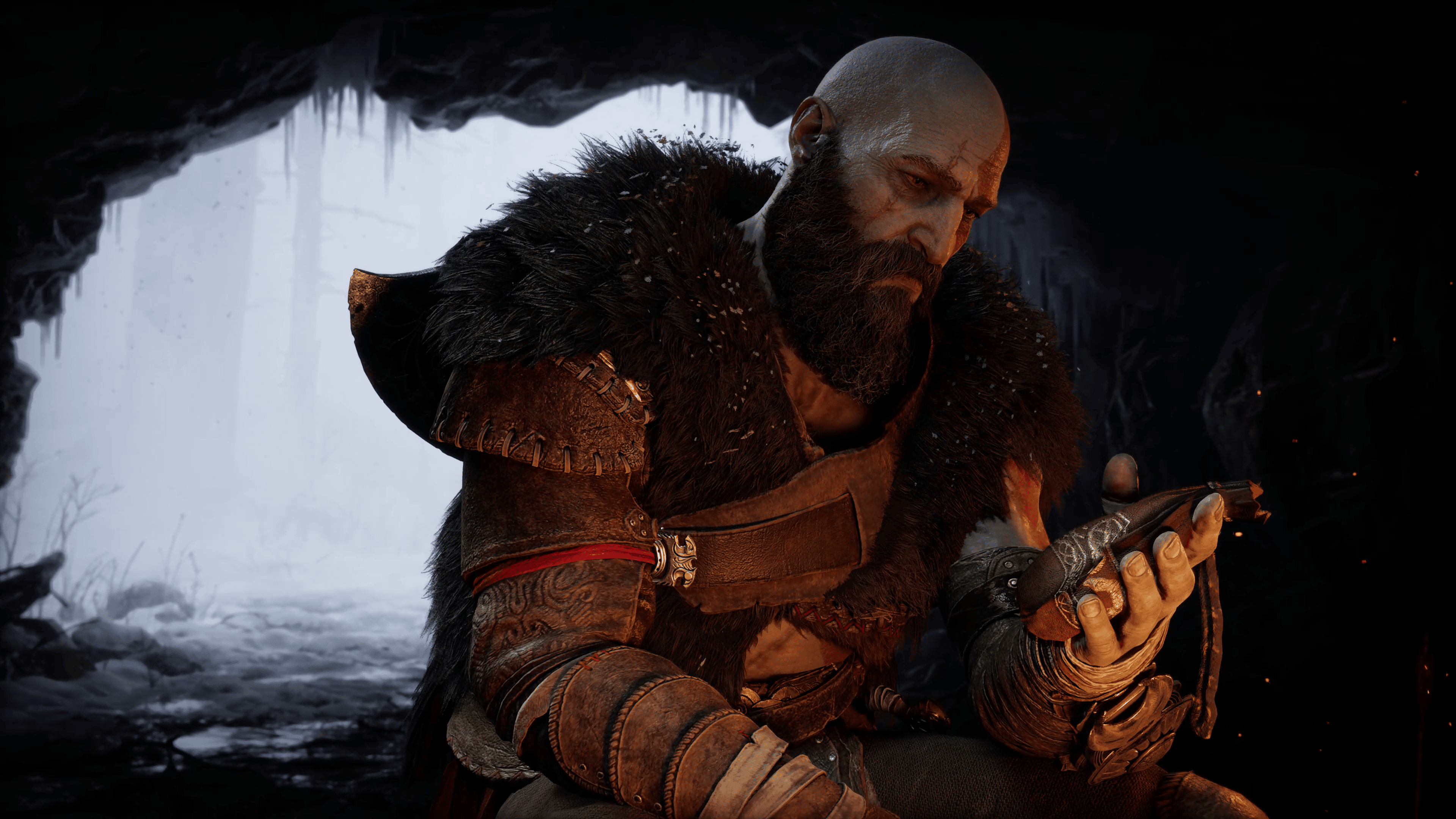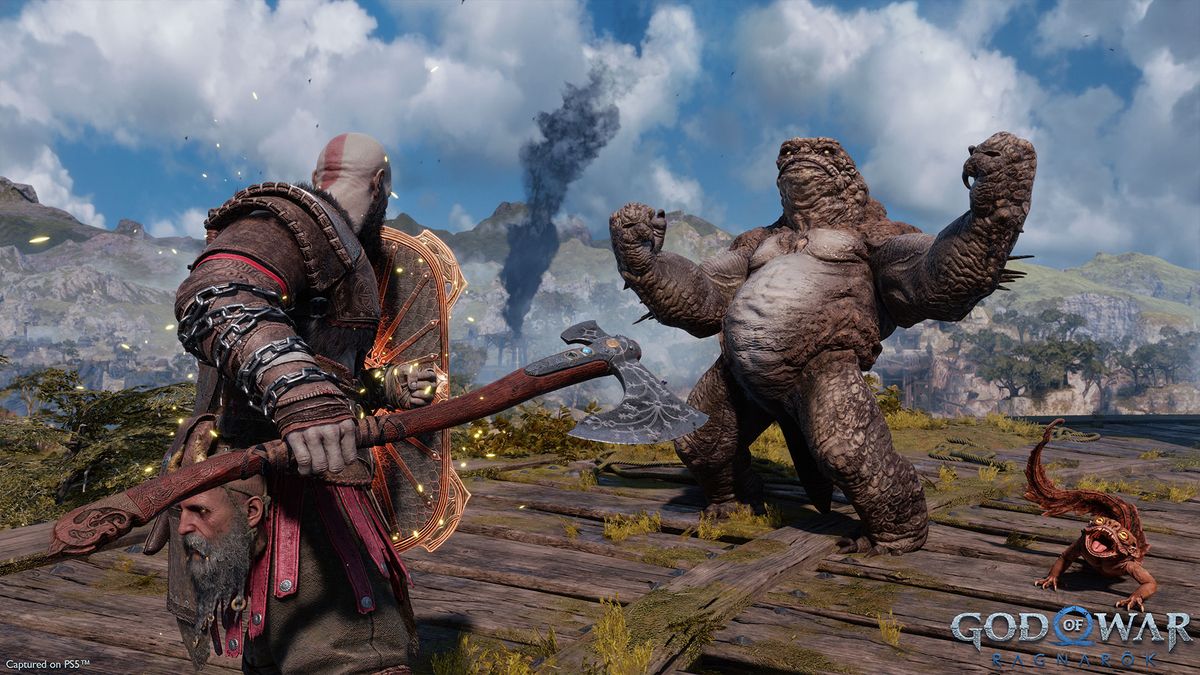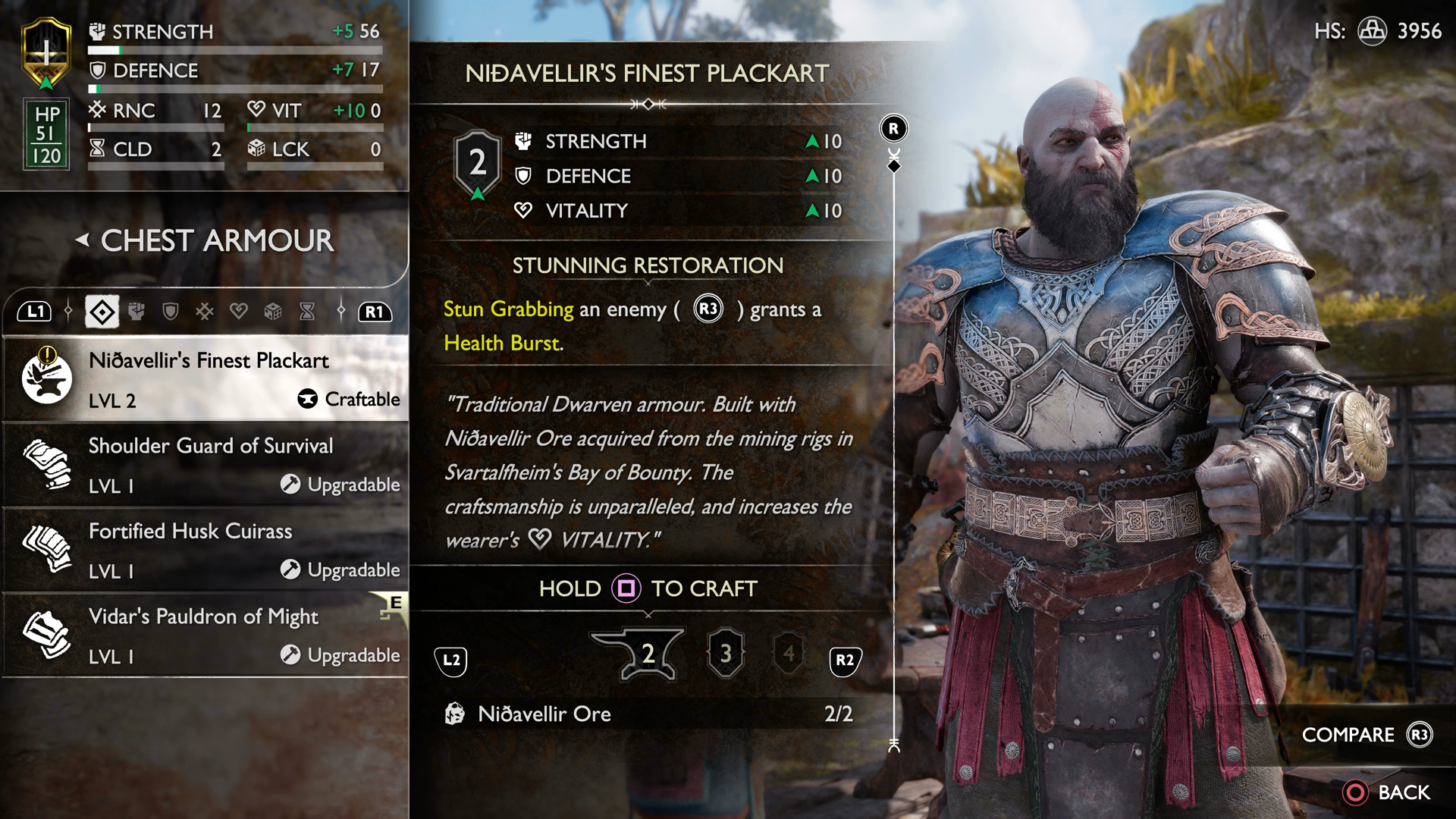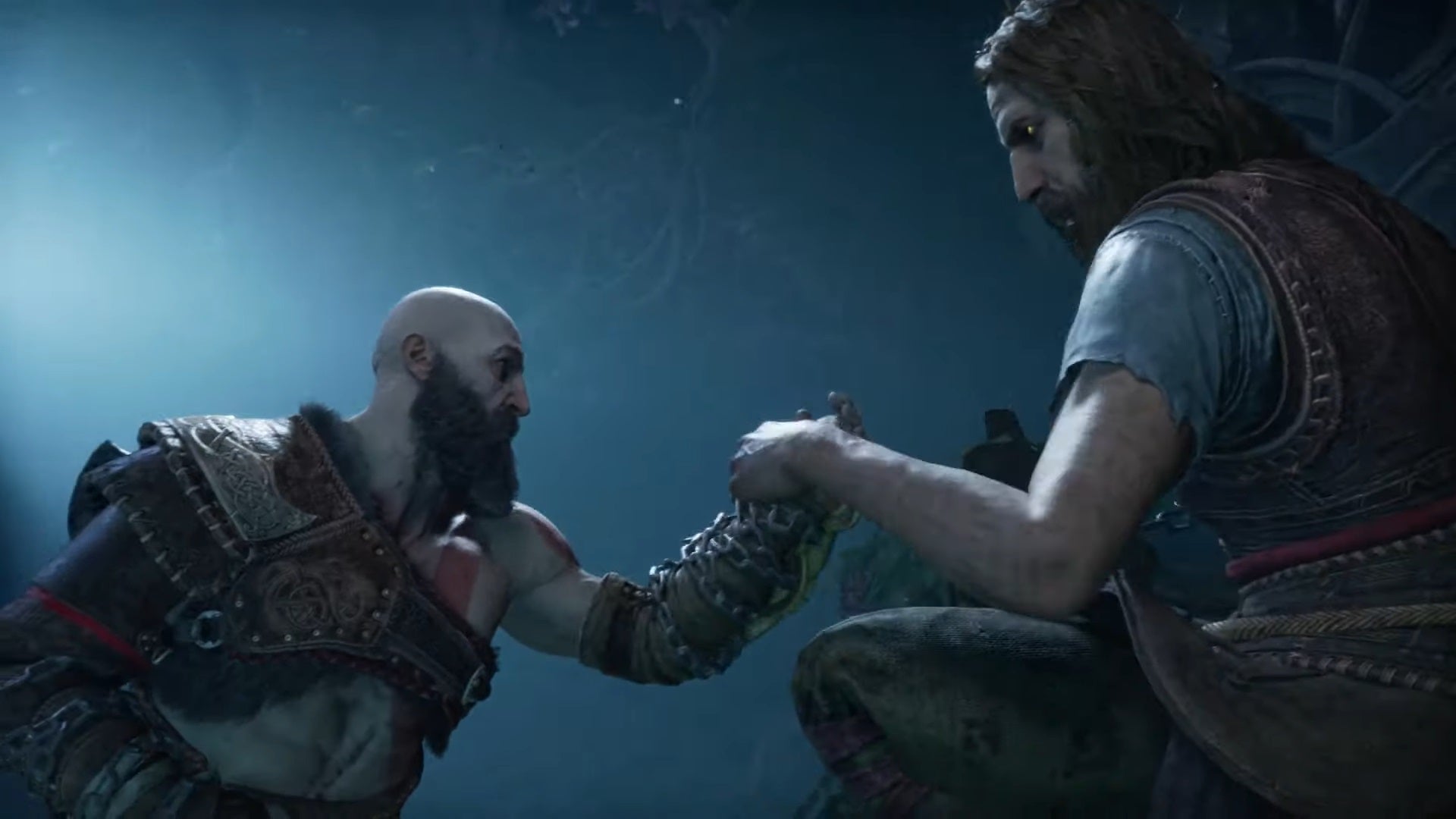God of War (2018) was a special game. I think that much is undeniable. Now, Santa Monica Studios have to follow that up, with a directorial debut from Eric Williams no less. A lot of time has passed since then, with Norse mythology coming into style right now primarily through the popularity of Thor in the MCU, it was possible that a bit of uniqueness may have been robbed from the God of War sequel. Well, 4 years later, Ragnarok is here, and this is nothing like the third Thor movie.
It is worth the wait? Yes.
Is it what I expected? Sort of.
Is it perfect? No.
Let’s get into it.
A tale of epic proportions
The conclusion to the 2018 God of War feels epic. That is the one word which encapsulates this entire finale. Now don’t get me wrong, epic doesn’t always mean large scale battles and huge monsters to take down, these are here, sure. The ‘epic’ that Ragnarok nails is the weightiness of each conversation, the implications of each death, double-cross and deception. Like The Lord of the Rings, the epic feel doesn’t just come from the conflict at Helms Deep, it comes from all the small encounters, the misdeeds, and the relationships which have been forged on the journey to that battle. That is what makes it feel epic. The same sentiment is shared in God of War Ragnarok.
The initial game really made you wait and built villains up over the course of the journey. As frustrating as this is at times, the pay off is almost always worth it. For instance, we have had an entire game talking about Odin and his many, many misdeeds, but only now do we see him in the flesh. The meeting of your expectation or lack of meeting them is an example of great subversion of expectations, something with this game does frequently.
Thor and Odin are here now, front and centre, each are endearing and believable villains. Odin for instance looks like a frail old man, portraying himself as a pacifist with the sleezy demeanor of a car salesmen attempting to tell you that the cracked windscreen will be “good for circulation”. Thor however, initially comes off as a battle-hungry brute, but both of these characters are explored and fleshed out across the journey, making them more than just ‘bad guys’.
Kratos continues his journey of becoming a loving husband and father to Atreus and the two are closer than ever. The growth here is truly deserved and each confrontation feeds into this larger theme of family, parenthood and ‘the sins of the father’. Whether it is Odin talking to Thor, Atreus talking to the pantheon of Norse gods, or an inconsequential ‘side-quest ghost’, the common thread between all of these is the bond of family. From family squabbles to world-altering drama, it is impossible not to be drawn into the characters and become invested in their motivations, goals, and often tragedies.
Such strong story-telling and writing meant that some of my favourite parts of the game are simply Kratos and his gang sitting down to eat some casserole. It sounds weird to write that, given some of the screenshots that will no doubt be peppered throughout this review, but it’s true.
God dang…
From a presentation perspective, Ragnarok opts for the same consistent camera across the entire campaign – no cuts. This is immediately distinctive in the video game medium and has rarely been done outside of film, popularized by the likes of Birdman and 1917. This does bring into question the value which this adds however. There are a few sacrifices made to accommodate this approach, largely the fast travel system which works as an infinitely loading corridor as you run along the branches of the Yggdrasil tree. The question you have to ask is, how much would be lost from replacing this with a traditional fast travel system? It is impossible to say without alternative versions of the title I suppose, but you can’t argue with the effort in place here. With this in mind, there are certainly times where it feels as though God of War Ragnarok does not respect the player’s time, especially when in the post-game attempting to mop up any loose collectibles.
The other large point of contention and immediately pace-breaking implementation is the ‘shimmying’ sections. Throughout the nine realms you have never seen so many tight spaces for Kratos to inch his way through. I think it is widely known that these have been put in place to mask loading screens, it is so well-known, you wonder why they bother with the illusion at all at this point. I also would’ve hoped that the transition to PS5 and access to the SSD would help resolve these barriers to level design, unfortunately not. This might be pulled straight over from the PS4 version of the game, but I really wish this compromise didn’t have to be made.
The menus and especially the map can also be a real pain to navigate and understand, the map especially is all but useless I’ve found. It looks pretty, sure, but as a functional map, it is like having satnav which only notifies you of parked cars.
From a presentation perspective, these are the only gripes from my perspective. Everything else is stellar. Graphics – beautiful, performances – powerful, world design – inspired.
The nine realms, whilst immediately recognisable from the 2018 predecessor, has also been tweaked in smart ways due to the onset of ‘Fimbulwinter’ – which has turned the areas upside down. For example, The Lake of the Nine has frozen over due to biting cold engulfing Midgard and sandstorms have consumed the elven home of Alfheim. Each of these areas is totally distinct, and a joy to explore, I regularly explored not because I had to, but because I wanted to – a credit I seem to give to fewer and fewer games in recent years. Where other titles are content to place collectibles around willy-nilly, Santa Monica have tied these into interesting lore and intriguing side stories which, whilst they can be missed altogether, are still enticing enough to pursue.
The performances here are all out of this world. Sony has really solidified games as a medium for actors to receive their “big break”. Games like The Last of Us and Uncharted have helped propel actors into stardom, with the likes of Troy Baker and Nolan North, God of War will surely be no exception. I have already mentioned the performances of Thor and Odin, but, pardon the pun, god dang Cristopher Judge’s voice. This has surely cemented Kratos, if he wasn’t already before, as one of the key mascots for Sony. It is clear to see why Christopher won his Game Award last week for this performance. Whilst Kratos tends to steal most scenes, the supporting cast also do a fantastic job of keeping up with his pace.
Live by the axe
God of War’s main gameplay loop can be split into several facets. First and foremost is combat. It has to be said, throwing and recalling the leviathan axe feels as good as ever. Through the use of smart button modifiers, all weapons are easy to use and don’t require too much thought. This is similar to the control scheme used when executing special moves in Super Smash Bros. Hold L1 to block, you then open up the opportunity to perform a heavy or light “runic” attack, hold L2 and you can then perform a light or heavy ranged attack. There are several modifiers like this. It’s smart, intuitive and incredibly accessible. The accessibility of this comes at a cost however, there is far less creative freedom when it comes to combos when stacked up against other character action titles. If you’re here for that, I would recommend heading over in Devil May Cry 5’s direction, it doesn’t get much better than that.
It does still feel strange to have the camera so close. Whilst it works great for the story segments and adds to the immersion, it just isn’t practical in the heat of battle. Even the implementation of an about-turn does not alleviate this. It is often difficult to get a gauge on the wider battle, made more difficult by Kratos’ slow movement.
Indicators of danger that is off-screen circles Kratos, but in particularly hectic encounters these are everywhere. Since there is no way to prioritise these, maneuvering around the danger can feel clumsy and unintuitive. Whether it is an arrow from a nearby sniper or huge strike from a club-wielding behemoth, both are represented with the same indicator. The team at Santa Monica also put in diegetic mechanics to aid the messiness in an attempt to make it more easy to parse – companions often shout out points of danger such as “on your left”, etc. As mentioned earlier these combat encounters can get pretty whacky, especially on higher difficulty settings, which means that there are often orders barked at you constantly. This might get on your nerves by the end of the lengthy campaign, I know it did for me.
This strive for realism also cause the weapon switching to feel a little clunky, switching between the Blades of Chaos and the Leviathan Axe mid-combo doesn’t always register and is nowhere near as snappy as the aforementioned DMCV.
In true God of War fashion, boss encounters pepper the lengthy runtime and whilst they’re all at the least entertaining, there is a definite slump in quality through the middle portion of the game. A fool-proof strategy is to utilise all your runic attacks back-to-back as soon as the fight starts, which will take off a decent chunk of HP, this’ll set you up to finish the fight with another flurry of runic moves once the cooldowns have elapsed – the strategy here never changes. Then, Kratos will perform his execution, a lot of which fell flat for me. I do have to say, part of me still misses the finishers from the original trilogy. There is nothing quite as graphic and over the top here, likely due to the more grounded tone. The kills are far less inventive in Ragnorok, as they were in God of War (2018), they’re efficient, sure, but not nearly as entertaining. Maybe it wouldn’t fit, but that doesn’t mean I can’t miss seeing Kratos pull an eyeball out or two.
Suffice it to say, the combat cannot stand up to Devil May Cry or Bayonetta. But, this isn’t really a fair comparison, it is the sum of it’s parts which makes God of War so beloved. And blimey, are there a lot of parts.
Stats upon stats upon stats
On top of the action mentioned above, there is also a layer of RPG goodness to dive into. Complete with elemental strengths and weaknesses to exploit, armour and weapon upgrades to min-max and a robust talisman loadout to cater to your playstyle.
Firstly, the armour and weapon upgrades, you can play dress up with Kratos, so that’s nice. Each of the armour sets will grant you small buffs in stats and most of them have additional benefits like “grants more damage on poisoned enemies”. This means that you can complement your play style right from the start. Weapons are similarly customisable, with new attachements granting similar bonuses to the armour sets – the combat is also impacted by these through the use of the runic abilities I mentioned earlier. New runic attacks can be slotted into your weapons like Materia from the Final Fantasy series to benefit your play style, each with differing levels of crowd control, status affliction and damage. This encourages a little bit of experimentation, but in my case, I found what worked and stuck with that, upgrading whenever I could.
You will also level up your weapons at certain points in the game, which unlocks more branches within the extensive skill tree. On top of this, it also increases the elemental damage of your weapons, which, when mix and matched throughout combat will do more damage. If you hit a frozen foe with fire, you will deal bonus damage and vice versa. This incentive to switch does keep combat flashy and kinetic, but you’ll be enticed to do so for these numerical buffs, not because you look cool doing so or want to be expressive in any way.
The skill tree in this game is deceptive. Branches unfurl time and time again, just when you think you have all of the options available to you, a new leaf turns over. What this means is that there is a real opportunity here to make this version of Kratos your own. Do you want to specialise in dealing status effects like frost and burn? You can do that. Want to focus on building stun and executing foes with flashy finishers? There’s a branch for you. Just want higher damage and more combo routes? We got you covered.
I don’t want to be snarky, but, what happened to the old skill tree I maxed of in the previous title? I spent the first few hours unlocking stuff I already had access to in the previous game. This was alright since I already knew what was worth picking up, but surely there were more ideas to throw in the pot. The same goes for the weapon and armour upgrades.
Becoming the god of lore
Exploration is thoroughly encouraged in Ragnarok, and as mentioned above, the beautiful visuals accommodate this greatly. There are endless nooks and crannies to hunt down all manner of collectibles, jewels, scrolls, flowers, coins, your usual fair.
There are side quests aplenty – and they’re all good. Each one is a small contained tale which usually fleshes out a character back story and will be punctuated with some kind of development. This means that there was more than simple loot driving me to accept every quest that was given, this loot helps of course, but it wasn’t everything. Even something as drab-sounding as “go to these four towers” has something deeper beneath the surface which was a joy to uncover always tying into the theme of family or wider narrative.
Writing interesting dialogue for these sections is always going to be a struggle – given some players may miss them entirely. These side-quests really allow the writers to flex their muscles – a nice mix of “olde” language and common slang makes me feel profound, whilst also making it comprehensible for my ape brain. Think Baz Lurman’s Romeo & Juliet, but good, and that’s what you’ve got here.
Trains, cranes and water mobiles
Puzzles in God of War Ragnarok quickly wear out their welcome, it has to be said. There are a few main types of puzzle, and these are iterated on in a few ways throughout the campaign. The problem is, none of these are particularly inspired – the cranes for example. Firstly, why are there so many cranes in the nine realms? Secondly, are these really interesting puzzles? Spinning a crane around to allow you to swing from one place to another is not, in my opinion, a puzzle. Given the theme of mythology, I would’ve hoped for more fantastical elements in my puzzles.
The companion characters will not shut up, it is relentless. I kid you not, one time the companion said the solution to a puzzle before I’d even had chance to process what was going on. This is clearly the result of playtesting and working out points of failure from a small sample size. This may be able to be turned off within the wealth of accessibility options hidden in the menus, but I didn’t check and I wanted to experience the game as the developers initially intended.
These puzzles add to the pacing issues I mentioned earlier and when combining this with clunky fast travel and lengthy story-driven sequences, there are likely to be extensive gaps where you aren’t exploring or tearing foes limb-from-limb.
Is it worth the hacksilver?
I know I may have come off a little more negative than usual in this review, but if you wanted to hear gushing love for the new title, there is no end to the number of “10/10” reviews on the internet. Whilst I do agree, the overall package is exceptional, it really is, it also has it’s fair share of flaws, some of them significant.
As someone who came into this wanting more God of War 2018, I cannot say I’m disappointed, that is exactly what I got. More of the same, just expanded. If this is your expectation going in, I doubt you can leave dissatisfied. There is also a hefty post-game to keep you completionists happy, the excessive price tag is more than justified in this regard, God of War Ragnarok is going to keep you busy for a long, long time.














